Massasauga Look-alikes
Some harmless species may look like – or mimic venomous snake behaviour in order to scare off predators. Some behaviour mimicry includes tail vibration against leaves to sound like a rattle, or stretching out their neck skin to mimic a cobra.
The Massasauga is the only rattlesnake left in Ontario. According to the Committee on the Status of Endangered Wildlife in Canada (COSEWIC) there are two designatable units of Massasauga in Canada, each with their own separate classification: the Great Lakes/St. Lawrence unit (Threatened status), and the Carolinian unit (Endangered status).
The populations existing in southwestern Ontario live in isolation from each other and are prone to declines as their habitat has been left in degraded conditions. There is much research underway on Massasauga population recovery and habitat management in Canada and the United States. See a recent publication (Yagi et al., 2020) that delves into this subject further!
For both human safety and species recovery purposes, it is important to know the differences between Massasaugas and other mottled snakes that live in Ontario.
Ontario's snakes with mottled patterns
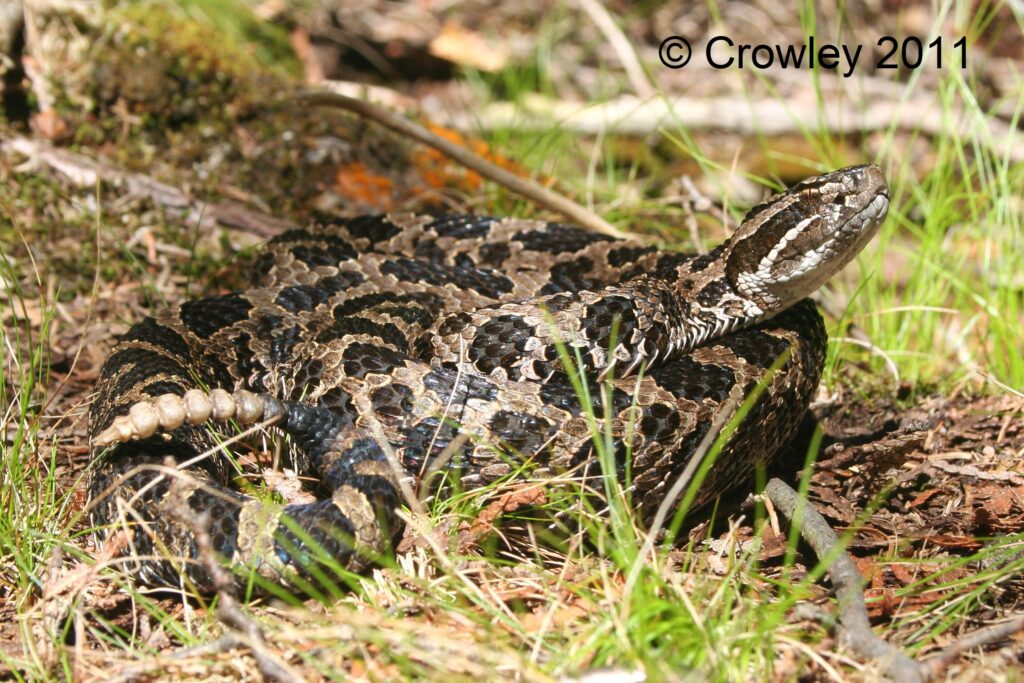
Massasauga
The Massasauga rattlesnake is a heavy-bodied snake, usually sporting a rattle on the end of their tails (unless their rattle has recently broken off!). They range from grey-brown to tan-brown with a darker brown mottled pattern or blotches down the body. Their bellies are distinctively dark/black with no pattern.
As it is characteristic for rattlesnakes, Massasaugas have distinct heat-sensing pits on their face (between their nostril and eye), as well as vertical pupils and a triangular-shaped head.
This species is normally very cryptic and tends to hide away to avoid people.
Visit the Ontario Reptile & Amphibian Atlas for more information.
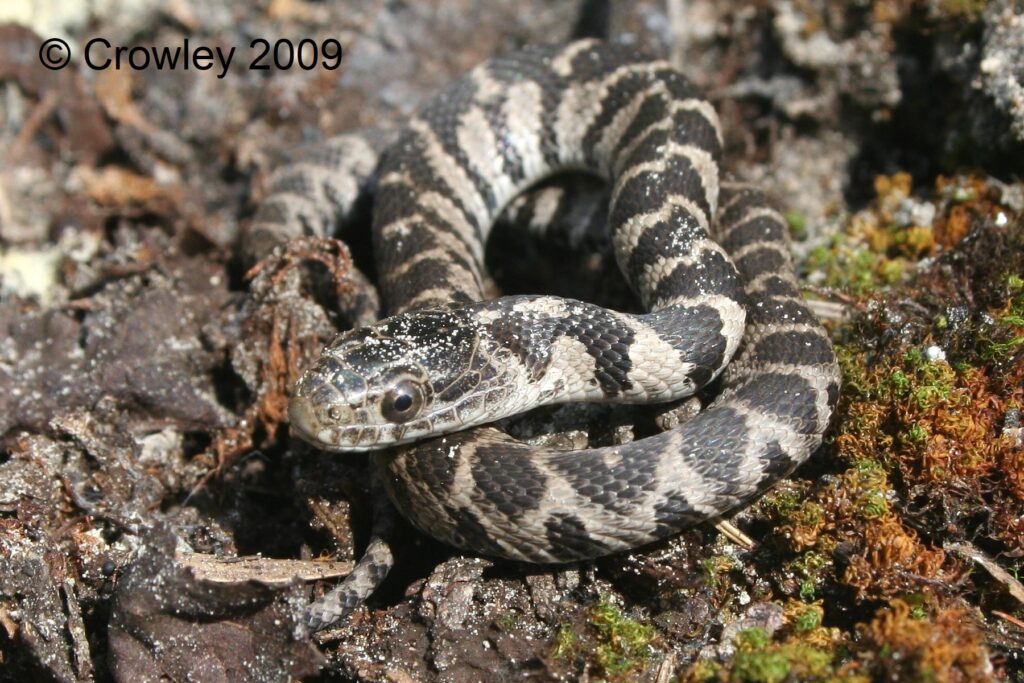
Juvenile Northern Watersnake
Northern watersnakes are rather common, and are often found near wetlands and along edges of waterbodies since they feed primarily on fish and amphibians. They are also heavy-bodied snakes, that are brown to dark brown in color, usually with a reddish-brown banding pattern. Juvenile watersnakes look more mottled and can be easily confused with other similar looking species.
Visit the Ontario Reptile & Amphibian Atlas for more information.

Milksnake
Milksnakes in Ontario are less common than they used to be (although their status has recently changed from SC to NAR). They are often light grey to tan colored with a brown to reddish brown mottled pattern with a dark outline. These are more slender bodied snakes, with smooth scales and a noticeable “Y” pattern on the top of their head.
Visit the Ontario Reptile & Amphibian Atlas for more information.
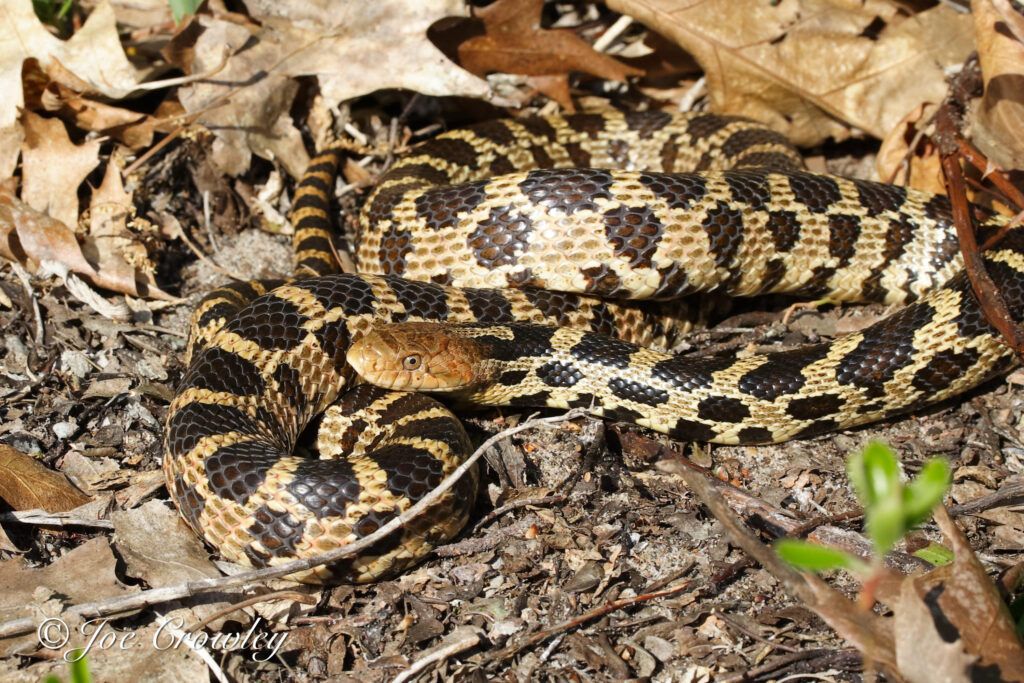
Eastern Foxsnake
This is the third-largest snake in Ontario, similar in shape to the Gray ratsnake. The foxsnakes are usually a yellow-brown color with dark brown to black blotches down the back and smaller blotches in two rows down their sides. The head is uniquely orange-brown and has a light belly with alternating dark patches.
Visit the Ontario Reptile & Amphibian Atlas for more information.
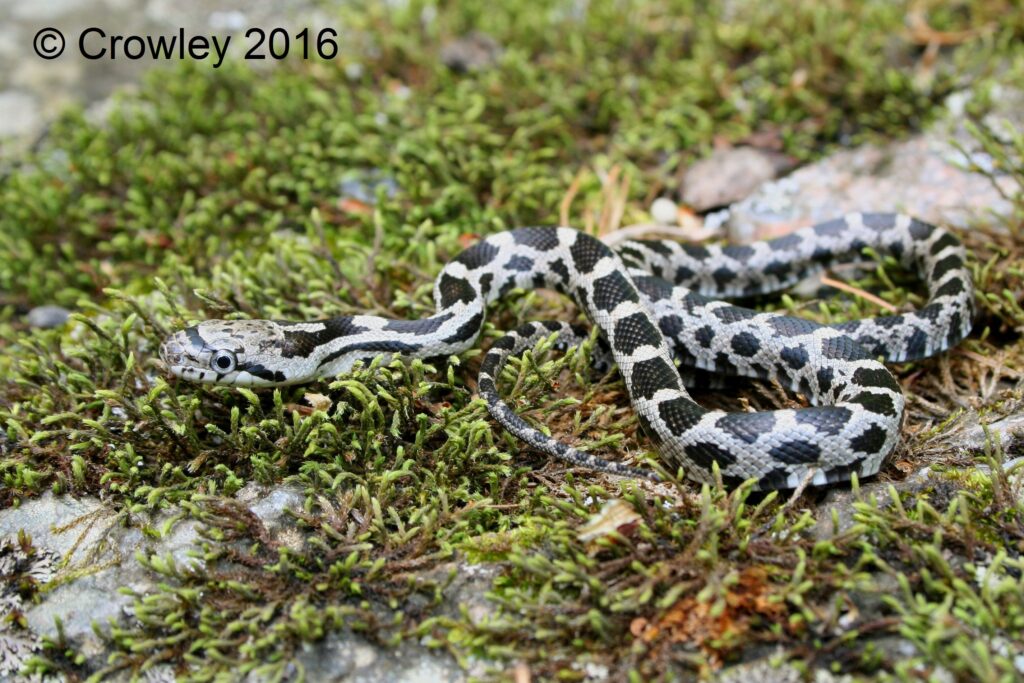
Juvenile Gray Ratsnake
While the adults are solid black in color and are the largest snake in Ontario (> 2 m in length), the juveniles hatch out from eggs with a light grey body and dark brown blotches. The belly of Grey ratsnakes is light coloured with dark patches in a distinctive checkerboard pattern.
Visit the Ontario Reptile & Amphibian Atlas for more information.
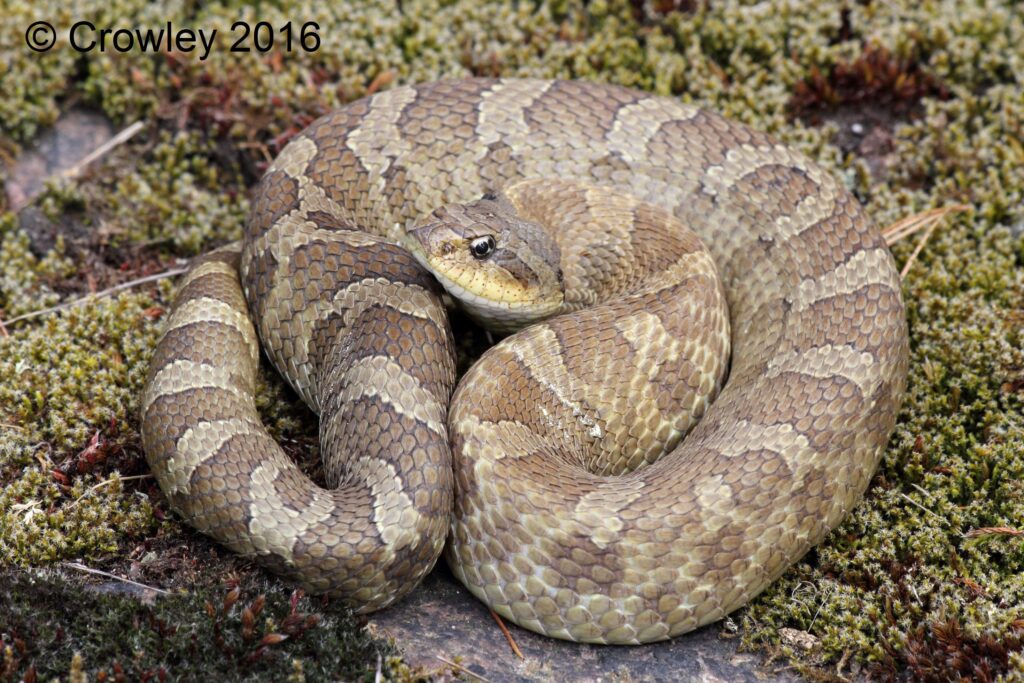
Eastern Hog-nosed snake
This snake is also heavy-bodied, and is named for the upturned scale at the tip of its nose. This snake can be found in a variety of colors and patterns. Some individuals have dark blotches or mottles on a lighter background, similar to other mottled snake species.
Hog-nosed snakes also exhibit a unique behaviour when encountering a predator, where it will fan out its neck to mimic a cobra hood. This species will also “play dead” by flipping on its back and hanging out its tongue if provoked further.
Visit the Ontario Reptile & Amphibian Atlas for more information.
Some snakes mimic rattlesnake behaviour!
The video here shows an Eastern Foxsnake displaying tail vibrations. The sound of the tail hitting the leafy debris mimics the sound of a rattlesnake rattle! This is a defense mechanism against predators.
